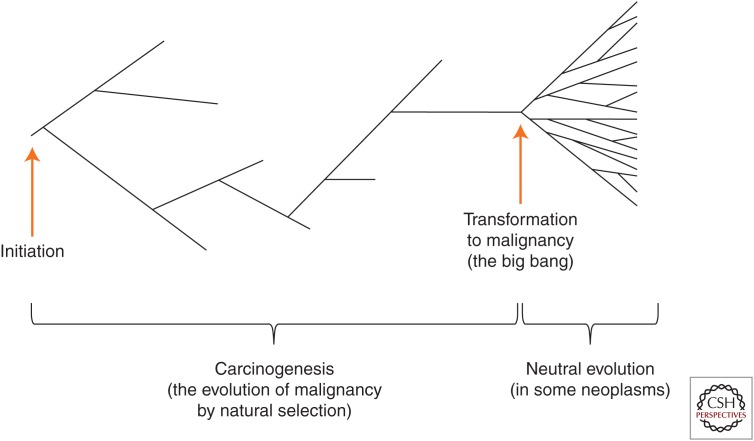Figure 3.
A schematic illustration of a phylogeny for somatic evolution in neoplastic cells over time (x-axis), starting from tumor initiation (far left). Neoplastic cell lineages accumulate somatic mutations during progression and eventually transformation to malignancy (far right). As described in the text, there may be multiple mechanisms of somatic evolution. Before malignancy, cell lineages may evolve by natural selection, in which certain clones have a fitness advantage. However, after transformation to malignancy, some neoplasms may evolve neutrally, in which clonal expansion is rapid (called the “big bang”) (Sottoriva et al. 2015), and most adaptation to the niche of the “endogenous parasite” is already completed.

